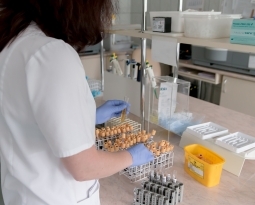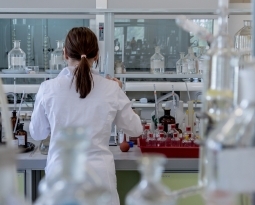The IRS Form 6765 got you down? Never Fear! Here are 4 Common Misconceptions about the R&D Tax Credit
As companies across the United States prepare for the end of another fiscal year, many Chartered Accountants are considering claiming the R&D Tax Credit but have no idea where to start. Others are avoiding it all together and unfortunately missing out on the chance to save up to 14% on their company’s research expenses.
From our over ten years’ experience helping accountants like you claim the R&D Tax Credit, we at Swanson Reed know that there are four common misconceptions about IRS Form 6765. We’re here to help de-bunk those myths and to encourage you not to let this opportunity to claim your R&D expenses go to waste.
Misconception #1:
I’m not building robots or creating something world-shattering so I’m not eligible
Many companies don’t think they’re conducting research and development activities because they aren’t dressed in white lab coats building androids and drones in a Tony Stark-style laboratory. While mechatronics engineering clearly qualifies for R&D, all industries are in fact eligible for the R&D Tax Credit. All you have to do is carry out activities that fulfil the IRS’ four part test:
- Activities are conducted for a permitted purpose
- There is the elimination of uncertainty when engaging in these activities
- The activities are technological in nature
- There is a process of experimentation in carrying out these activities
Maybe you’re a food manufacturer experimenting with new recipes to create tastier, longer-lasting food products while also improving your air ventilation system during the cooking stage. Or perhaps you’re a furniture company looking to build an automated process to pack and ship your products more efficiently to your clients. You could be a software company developing codes to optimize a client’s cyber-security. Or you’re specializing in creating outdoor camping products that are made from environmentally sustainable materials and are more durable than what’s already on the market.
Sound like you? Then you’re eligible for the R&D Tax Credit!
Misconception #2:
My experiments failed so there’s no point in filing them to IRS Form 6765
You just spent $1000 to test an exhaustion fan in your food manufacturing factory to try to improve your air ventilation. Unfortunately, the exhaustion fan did not cool down the food or allow the adequate circulation needed to maintain the air quality in the facility. Maybe you spent thousands of dollars trialing different codes for an anti-virus software but it keeps failing to stop malware. Perhaps you invested thousands of dollars into constructing new fabrics for outdoor jackets that are waterproof and compactable but can’t seem to conserve body heat and keep your customers warm.
We all know how expensive experiments can be. It’s even worse when it fails and all that investment seems wasted. Do not be discouraged! On the contrary, failure clearly demonstrates you were conducting R&D. In fact, the IRS does not require these research experiments to succeed in order to qualify for the tax credit and you can still get up to 14% back these expenses, no matter the outcome of the experiments.
Misconception #3:
My company is too small and we didn’t make a profit this year
The size of a company does not affect eligibility for the credit. From small start-ups, sole proprietorships, to large corporations, any entity is eligible for the R&D Tax Credit as long as their activities satisfy the Four Part Test. In fact, small-medium enterprises comprise 50% of the companies that claim IRS Form 6765.
You do not need to be immediately profitable to take advantage of the credit. The R&D tax credit can be carried forward for 20 years and back one year which means even if you are not profitable this year, you can save those credits for future years. If you’re a start-up that doesn’t pay income tax, you can still claim that credit against your payroll tax. To find out about all the R&D credit programs, contact a Swanson Reed R&D Specialist.
Misconception #4:
It’s too much effort to file for Form 6765
There is often confusion among CPAs about the necessary documents required to file the R&D Tax Credit. While it is true that documentation for the IRS is quite rigorous, it is simpler than you think.
Companies can claim three types of expenses: salaries, supplies, and contracted research. Eligible documentation for salaries include payroll registers, interviews, W2s, and other documents related to labor costs. Supplies are typically documented by general ledgers and vendor invoices. In terms of contracted research, invoices and 1099s to these third-party vendors are acceptable. Companies tend to already keep these documents on hand and aren’t as difficult to acquire as many think. For a more comprehensive explanation about documentation, visit Swanson Reed’s page on documentation or contact a Swanson Reed R&D Specialist today.
Still have questions?
Swanson Reed is hosting an upcoming webinar on November 13, 2017 at 10 am CDT that further explains the R&D Tax Credit. This webinar is free and can count as part of Continuing Education credits for CPAs. The deadline to complete all your annual continuing education credits is just around the corner. Don’t miss this chance to get your credits and to learn more about the R&D Tax Credit from the experts. For more information please visit us at www.swansonreed.com/webinars or contact a Swanson Reed R&D Specialist.

















